I LIKED THE TEXTS ARE VERY HELPFUL.
We've selected several suggestions for complete religious teaching activities to work on in the classroom with your students, ready-to-save and printable activities.
Remembering that the religious teaching in schools, in accordance with the Brazilian Constitution and the Law of Guidelines and Bases of National Education, provided that they are not mandatory for students and the institution ensure respect when trying to convert someone, religion. discipline must be taught without defending any religious institution. It is necessary that the teacher is very attentive when giving his classes on religious education, working on basic concepts for a good relationship and respecting others.
The subject is present in almost all schools, teaching students and making them really learn is not always an easy task.


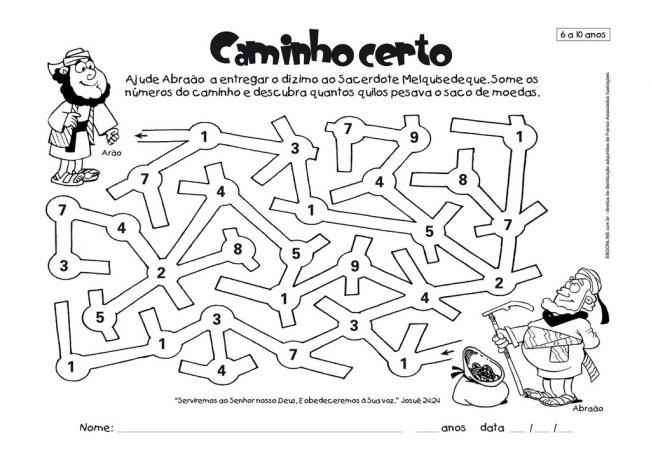
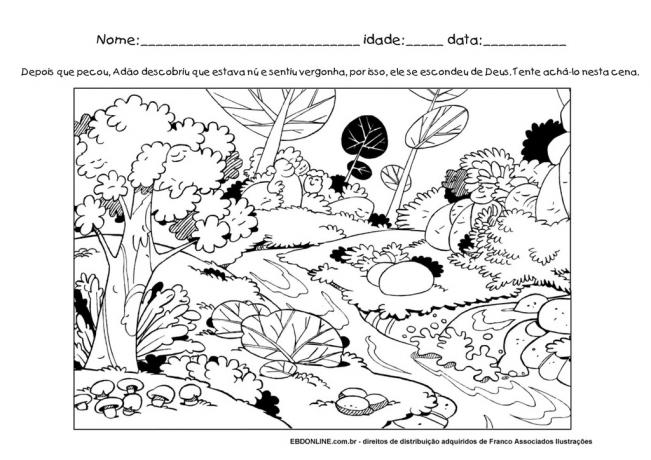



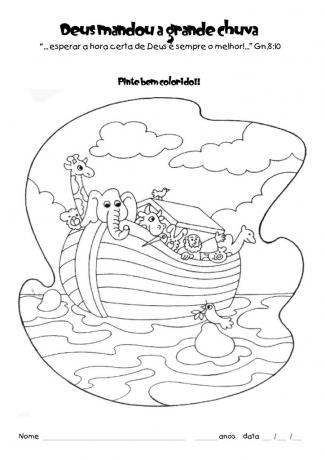























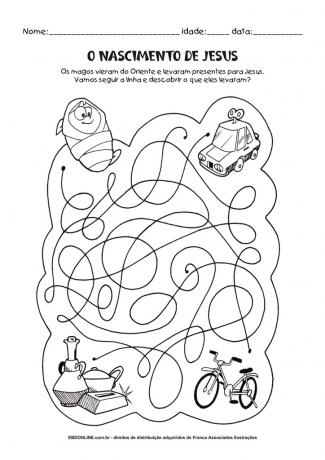



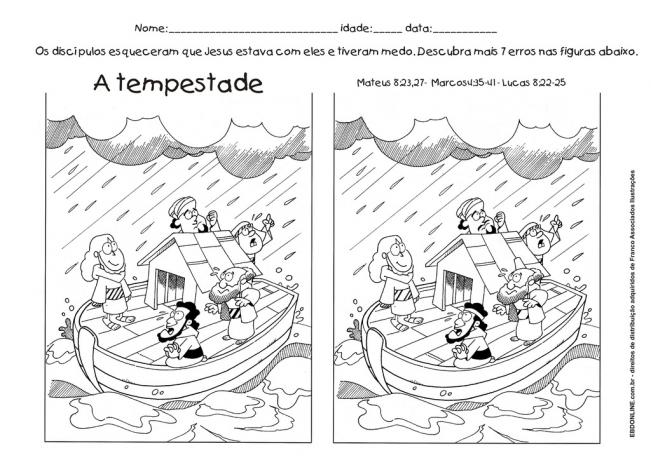
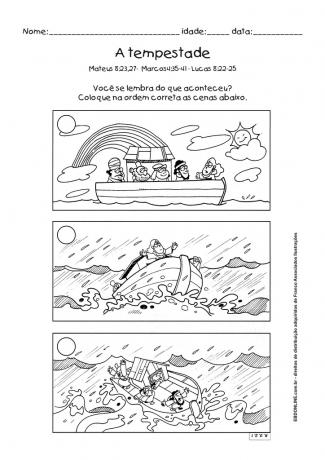


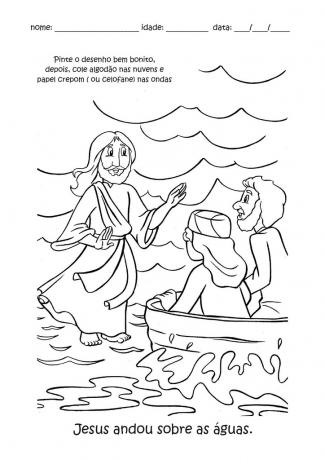








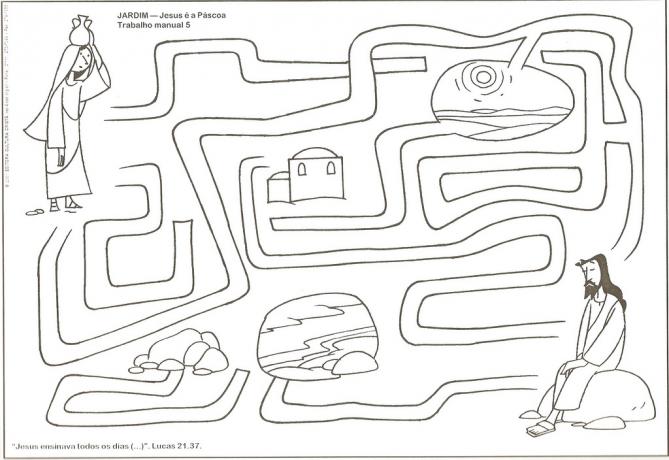






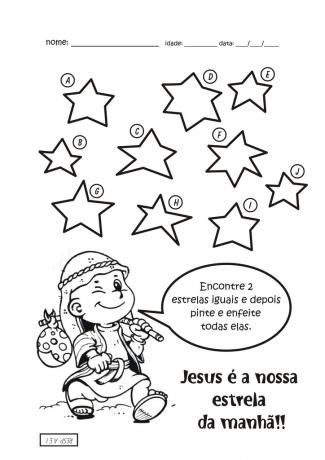














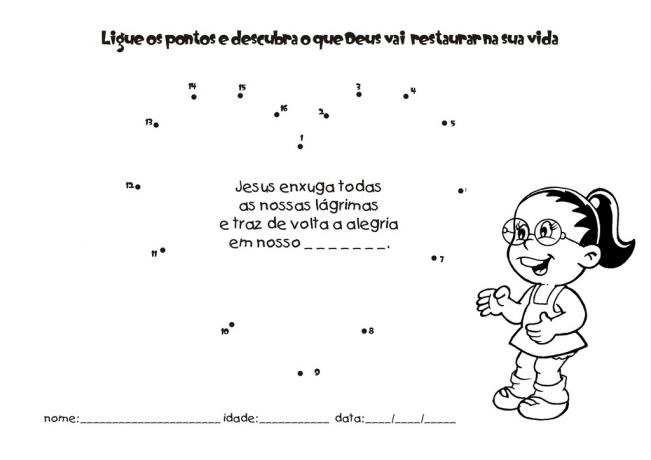







Many people gather in religious communities in order to collectively experience their faith.
Religions or churches can help people to seek understanding about the meaning of life, to face it with courage and hope for the difficult moments, such as illness, death, as well as celebrating and sharing the happy moments of life.
Christianity: "All that, therefore, which you want others to do to you, do it to them." (Matthew 7.12).
Islam: "None of you are an authentic believer until you devote the love you devote to yourselves to your neighbor." (Mohammed).
Buddhism: "Do not hurt others with what hurts you." (Buddha).
Hinduism: "Here is the summation of all duty: do not do to others what, if it were done to you, would cause you pain." (Mahabharata, Hindu holy book)
Judaism: "What is hateful to you, do not do to others." (Hillel, Jewish master).
ACTIVITIES
1. Answer the questions below:
a) What do people gather in religious communities for?
b) How can religions and churches help people?
c) How can religions contribute to the humanization of individuals?
2. In teams, create posters with the ethical teachings of each religion. Each team must create a poster of one of the religions that the text presents. Then make an exhibition of the posters.
3. Do research on some ethical teachings taught by your religion or a religion or church that exists in your community. From the survey data write a text and then read your text to colleagues.
RELIGIOUS DIVERSITY IN BRAZIL
serrob
Religion or religious tradition is part of the life of a people.
Culture you may already know, it is the way or way of being of a people. In other words, everything that the people believe in, value, respect, transmit, teach, sing, dance and celebrate, is part of the culture. Culture is a set of material and spiritual values that are part of the way of life of a people or social group.
The Brazilian people are culturally religious people. The manifestations of this religiosity are everywhere: in the large number of temples and churches, in commerce, in media, in the names of towns, cities, streets and schools, in religious festivals and holidays, in customs, in the speech of the people, etc.
It is becoming common in some countries and in Brazil, for people of different religions to come together to dialogue, and together think and plan the construction of a solidary, humane and fair world.
It is important to know other religions to respect and understand the religious differences that exist in the world.
The knowledge of religious diversity is a path that allows citizens to overcome prejudice and religious fanaticism.
Knowing to respect the different and the differences is very important for the promotion of cultures of peace.
ACTIVITIES
1. Answer according to what you read in the text above:
a) What is culture?
b) How can we perceive the manifestations of the Brazilian people's religiosity?
c) What is becoming more and more common in some countries and in Brazil?
d) Why is it important to know about other religions?
2. Look up the meaning of words in a dictionary:
a) citizen
b) prejudice
c) fanaticism
3. Within the map of Brazil, represent the religious cultural diversity existing in our country with drawings or engravings. Then create a text describing what you represented. Read the text to colleagues.
THE INTER-RELIGIOUS DIALOGUE
serrob
Interfaith dialogue is the search for understanding between people of different religions.
We learn to dialogue by dialoguing.
Thus, interreligious dialogue is a possibility to know what is different and build mutual respect.
Dialogue with the other is not aggressively arguing, nor wanting to convince the other that my religion, church, culture or point of view is better, but it is an attitude of valuing the other in their differences without judgment and without preconception.
The ability to be open to interreligious dialogue is a possibility for building peace and friendship between people of different cultures and religions.
ACTIVITIES
1. Answer according to the text above:
a) What is interfaith dialogue?
b) Interreligious dialogue is a possibility for what?
c) What does it mean to dialogue with the other?
d) Interreligious dialogue is a possibility for building what?
2. Search dictionaries for the meaning of these words:
Dialogue:
Religion:
Church:
3. Illustrate the text above with drawings and then comment on what you were able to represent.
4. As a team, create a drama from the text. You will be able to create puppets to present the piece. Rehearse and present the play to classmates from other classes.
TO THINK ABOUT
Emerli Schlögl
There are people who feel ownership of the truth, so they try in every way to change the thinking of others.
This is what happened to the Portuguese during the colonization of Brazil. They brought their religion to Brazil, and forced many indigenous and black peoples to abandon their beliefs.
With this behavior, a great devaluation of the other happened and still happens.
Disrespect for individual freedom leaves deep marks of bitterness in dominated peoples.
This happens to all of us when we are not heard and respected in our way of living and believing.
If we are forced to change, to adopt a lifestyle that we don't like in order to be happier, we feel deep anger and we try to resist.
The world doesn't need more Catholics, more Buddhists, more Spiritists, more Evangelicals, more Umbanda. The world does need Catholics, Evangelicals, Buddhists, Spiritists, Umbanda practitioners who live their religion, and who share this world with people of other faiths, respecting each other and working together for the well-being of all.
ACTIVITY
From the text you read create acrostics with the highlighted words. Then socialize your production.
RELIGION
DIALOGUE
GOOD NEWS
“The good news is that, very close to the capital of Brazil, in a village of just over a thousand residents called the Alfa Area, Catholics and Evangelicals share the same temple.
In the beginning, the Sacred Heart Chapel of Jesus and Mary was only for Catholics. Evangelicals held their services in a small unoccupied house, but they had to abandon it. They were left without a temple. But for a little time.
Soon, the faith of evangelicals ended up being welcomed by the Catholic chapel. For three years, every Sunday has been like this: first Mass comes, and Catholics pray; when the mass is over, it is time for worship, and evangelicals pray, in the same place where mass was held before.
But what about the images of Catholic saints, which so many manifestations of intolerance have caused? Ah, evangelicals carefully collect the images of the Sacred Heart of Jesus, Immaculate Conception of Maria, Our Lady of Fátima and Our Lady of the Rosary, keep it very carefully in a small room, and begin the cult.
Catholics say that sharing the same roof with evangelicals has been a good fruit of religious dialogue, and that everyone is a Christian, and that the temple belongs to everyone.
Evangelicals thank – and tell: when Catholics have problems, they ask evangelicals to pray for them; and Catholics give back, praying for evangelicals.”
(Special Secretariat for Human Rights. Primer: Religious Diversity and Human Rights, 2004, p. 35 and 36).
RELIGIOUS TEACHING ACTIVITIES
1.Create a comic book from the idea of the text you read above, then share your production with colleagues.
2. As a team, read the poem and try to create a melody for it. You will be able to create a choreography and present it to classmates from other classes.
DIALOGUE
serrob
I will dialogue
open my heart
with you talk
about the value of religion
I will dialogue
to others welcome
respect everyone
And with the differences to learn
I will dialogue
on the wings of freedom
Together we will conquer
More justice and equality
THE SACRED TEXTS
Emerli Schlögl
Religious teaching is most often transmitted to people through texts, these texts are often written and constitute the holy books.
Other times they are told verbally: they are the sacred stories of oral transmission.
Other times sacred ideas are drawn and painted, such as the paintings found on the walls of churches, temples, stained glass, etc.
There are many religions in the world, all of them with ideas that guide their followers on ways to live in community and in harmony with the Sacred.
ADDITIONAL INFORMATION
Hinduism is a religion that emerged in India and is very concerned with the spiritual improvement of people.
Buddhism was also born in India with the experience of the Buddha, and its main concern is compassion for all beings, compassion means to feel pity when someone suffers some kind of harm and to do everything possible to help.
Judaism emerged in the Middle East and has justice as its key point, this means living fairly, not harming your fellows and practicing charity.
Taoism is a religion that started in China. Its followers seek to understand life very deeply, realizing what the essence of all things is.
Christianity was born in the Middle East as well as Judaism. It was strongly influenced by Jewish thought, organized and differentiated from it after the teachings of Jesus Christ. For Christians fraternal love is the foundation of life.
Islamism, organized by Muhammad (630) also emerged in the Middle East. The main point of this religion is the belief and submission to one God, Allah.
RELIGIOUS TEACHING ACTIVITIES
Research the symbols of the religions cited, write down your research data. Then draw each symbol on a sheet, transcribe some information obtained through the survey. Then organize a knowledge album and then share it with colleagues and family.
RITES AND RITUALS IN PEOPLE'S LIVES
Dina Raquel D. of the coast
Religious rites are symbolic sacred gestures.
Rituals or ceremonies are a series of rites.
There are liturgical rituals, such as mass, worship, prayer or meditation meetings.
Through rites of passage, people celebrate changes from one stage of life to another.
Baptism, marriage, the commemoration of the birth of babies, the initiation ceremony for young people to adulthood, are some examples of rites of passage.
ACTIVITIES
1) Do research and describe a rite of passage of the following traditions:
Indigenous:
Umbanda:
Hinduism:
Judaism:
Catholic church:
Evangelical Church:
2) Use the survey data to creatively organize posters. Glue pictures cut from used magazines or draw pictures about researched rituals.
PLACES OF PILGRIMAGE IN BRAZIL AND THE WORLD
Guilouski Borres
Places of religious pilgrimage are sacred spaces where many people gather to experience faith or encounter the sacred in a special way.
In Brazil there are pilgrimage centers, also called pilgrimage centers. Some originated in popular Catholic religiosity.
There are also places of pilgrimage in Brazil for other religious manifestations. An example is the Vale do Amanhecer, near Brasília, created in a more recent period, characterized by an intense search linked to spirituality and attracts people from different states and other countries.
Among many other holy places of pilgrimage, we have the city of Jerusalem in Palestine, Mecca in the Middle East, Rome in Italy, Benares in India, Lourdes in France, Fatima in Portugal, Guadalupe in Mexico, Lhasa in Tibet, Aparecida do Norte and Juazeiro in Brazil.
ACTIVITIES
As a team, carry out a survey of the places of pilgrimage mentioned in the text above. Use the search results and photos from magazines or the internet to build posters or models. Then share the information by making a presentation at school.
GLOSSARY OF RELIGIOUS KNOWLEDGE
Otherness – quality or state of what is “other”, different. Otherness is also an attitude of recognizing the other. We have otherness when we recognize that the other, be it a person, a religious, ethnic, cultural, political, etc. group. you have the right to be different, to be other.
Doctrine – is a set of principles, dogmas, norms, precepts of faith of a certain religion. E.g.: the doctrine about heaven and hell, the Holy Trinity in Christianity, the doctrine of reincarnation in Spiritism and in several Eastern Religions, etc.
Spirituality – are methods and practices that allow the believer or adept of a certain religious or mystical tradition to have an immediate relationship with the Transcendent or Immanent. Ex.: prayer, meditation, recitation of the rosary, reading of a sacred text, sacred dance, chanting of mantras or songs of praise, etc.
Hierarchy – is the organization that divides people into classes, positions and distributes them at different levels, establishing roles. Ex.: babalorixá is the male leader, yalorixá is the female leader within Candomblé; The pope is the top leader in Roman Catholicism, followed by cardinals, archbishops, bishops, presbyters or priests, deacons, religious and laity. In the Orthodox Church: patriarchs, metropolitans, bishops, presbyters and deacons. In evangelical churches are the pastors, pastors, presbyters, deacons and deaconesses, elders, evangelists, etc. The shaman or shaman and counselors in indigenous traditions.
Church – the word church means assembly, congregation or gathering of people gathered around a certain belief. Church is the community of faith. Christianity is constituted by several churches or religious groups, among which we highlight: Roman Catholic Church, Orthodox Churches: Greek, Syria, Russian, Ukrainian, etc. Protestant or Evangelical Churches that are subdivided into Traditional Evangelical Churches: Lutheran, Presbyterian, Methodist, Baptist, Anglican, Congregational, etc. and Evangelical Pentecostal Churches: Assembly of God, Christian Congregation in Brazil, Foursquare, The Brazil for Christ, God is Love, House of Blessing, Universal of the Kingdom of God, International of Grace, etc. There are also Christian Churches and Religious Groups Parallel to the 16th century Reformation, such as Church of Jesus Christ of Latter-day Saints (Mormons), Jehovah's Witnesses, Christian Science, etc.
Immanent – immanent in opposition to the transcendent means within, that which is interior to being.
Religiosity – is the dimension of the human being through which he experiences the divine, sacred, spiritual and transcendent meaning of life. Religiousness is also a human attitude towards life and sacred things. E.g.: having respect for all forms of life, providing relief or help to someone in need, revering the presence of the Sacred in people regardless of their belief or culture, among others, they are examples of religious and humanitarian attitudes of those who are experiencing their dimension. religious.
Religion – is a word of Latin origin, derived from the term religare, and means to reconnect, unite, join. Religion is the human being's reconnection with the Sacred. Among other concepts, religion is the concrete, visible and social form of personal and community relationship of human beings with themselves, with others and with the Sacred. Religion is the “meeting of the human being with the Sacred”. Religion, therefore, is religiosity institutionalized and organized in doctrines, rites, rituals, sacred texts, symbols, spiritualities, hierarchical structure and ethical standards of conduct.
Rites – are sacred symbolic gestures. They are repetitive, that is, they are performed in the same way. Rites are gestures that express a certain belief, usually part of a ceremony or religious ritual. E.g.: baptism by immersion, anointing with oil, hands placed in an attitude of prayer, embrace of peace, etc.
Rituals – are a series of rites. Rituals or ceremonies can mark a transformation or passage into a new state of being. There are different rituals, with different goals. E.g.: rites of passage (marriage, beginning of adulthood, baptism, birth...), celebratory (Easter, Christmas, feast of Iemanjá on New Year's Eve, indigenous harvest celebration…), liturgical (mass, worship, via sacred…).
Sacred – According to author Mircea Eliade (1992), the sacred implies the manifestations of an order different from the material order, following a logic that does not belong to this world. Eliade differentiates the sacred from the profane, consisting of words with opposite meanings. Sacred is what is separate, what belongs to a distinct reality. Generally speaking, for example, everything “inside the temple” is considered sacred because the temple is the territory of the sacred. In some cultures for religious people, the sacred is what has been set apart, what is holy, so it is not used in everyday life; the profane is opposed to the sacred and is what people can use to their advantage.
Religious symbols – objects and elements that bring to mind something or someone who is not present. Religious symbols are languages that communicate ideas about the Sacred. For example: the sun can be a symbol of life, water a symbol of purification, fire a symbol of transformation, icons and religious images can represent teachings, protection, etc.
Tradition – word that means to transmit or pass on. Tradition is built through repetition, for example, certain important events for a group are always celebrated on a certain occasion or time of year (popular festivals, religious celebrations, etc.).
Religious tradition – term that designates a certain religious matrix, a religion, for example: Hinduism, Buddhism, Judaism, Christianity, Islam, Candomblé, Indigenous Religions, etc.
Transcendent - it is what is beyond materiality, what goes beyond the limits of understanding human, which is ineffable, infinite, Supreme Being or "God" as it is called by some traditions religious. Religious traditions and even each person conceives the transcendent in different ways.
Sacred texts – are texts considered sacred for their content and for being, according to some religions, divinely inspired. They are resources for communicating and perpetuating sacred and spiritual teachings. There are several ways of presenting sacred texts: oral texts (stories told), written texts (sacred scriptures or sacred books), pictorial texts (drawings, paintings…).
REFERENCES
https://pt.wikipedia.org/wiki/Educa%C3%A7%C3%A3o_religiosa
Bowker, John. To understand religions. São Paulo, Attica, 1997.
FINE, Dorren. What do we know about Judaism. São Paulo, Callis, 1998.
GENERI, Anita. What do we know about Buddhism. São Paulo, Callis, 1999.
_____What we know about Hinduism. São Paulo, Callis, 1998. (See volume commentary: What do we know about Judaism?).
CARNIATO, Maria Inês & Team. Religious Education – 2nd grade, São Paulo: Paulinas, 1990.
GHAI, OP. Unity in Diversity – Spiritual Heritage Collection. Petrópolis – Voices, 1990.
HELLERN, Victor; NOTAKER, Henry; GAARDER, Justein. The book of religions. São Paulo, CIA das Letras, 2000.
MARCHON, Benoit and KIEFFER, Jean-François. The great religions of the world. São Paulo, Paulinas, 1995.
ELIADE, Mircea. The sacred and the profane. São Paulo: Martins Fontes, 1992.
___________. The sacred knowledge of all ages. São Paulo: Mercury, 2004.
Did you like it? Share this post on your social network
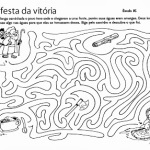 bible activities labyrinths
bible activities labyrinths
 Christmas activities for coloring
Christmas activities for coloring
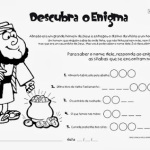 biblical activities
biblical activities
 Coloring activities about Christmas
Coloring activities about Christmas
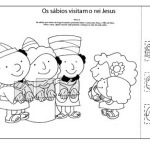 Activities coloring pages
Activities coloring pages
 Biblical smilinguido coloring page
Biblical smilinguido coloring page
I LIKED THE TEXTS ARE VERY HELPFUL.
This site uses Akismet to reduce spam. Learn how your comment data is processed.

